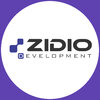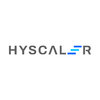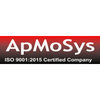i
Filter interviews by
Extio Technology and Consulting LLP Devops Engineer Interview Questions and Answers
8 Interview questions
Some popular DevOps tools include Jenkins, Docker, Ansible, Kubernetes, and Git.
Jenkins
Docker
Ansible
Kubernetes
Git
Anti-patterns of DevOps are common practices that hinder the successful implementation of DevOps principles and practices.
Lack of collaboration between development and operations teams
Manual and error-prone deployment processes
Silos within the organization leading to lack of communication and sharing
Failure to automate repetitive tasks
Ignoring monitoring and feedback loops
Focusing solely on tools rather than cultu...
Version control allows for tracking changes, collaboration, reverting to previous versions, and maintaining code integrity.
Facilitates tracking changes made to code over time
Enables collaboration among team members by providing a centralized repository
Allows for reverting to previous versions of code in case of errors or bugs
Helps maintain code integrity and consistency across different environments
Facilitates cod...
Configuration management in DevOps involves automating the setup and maintenance of infrastructure and applications.
Ensures consistency in infrastructure and application configurations across different environments
Automates the process of provisioning, configuring, and managing servers and applications
Helps in tracking changes made to configurations and rolling back to previous versions if needed
Facilitates collab...
Some important DevOps KPIs include deployment frequency, lead time for changes, mean time to recover, and change failure rate.
Deployment frequency: How often code is deployed to production
Lead time for changes: How long it takes for code changes to go from commit to production
Mean time to recover: How quickly the system can recover from failures
Change failure rate: Percentage of changes that result in failure
Continuous delivery focuses on automating the software delivery process up to the production environment, while continuous deployment goes a step further by automatically deploying every change to production.
Continuous delivery ensures that code changes are always in a deployable state, ready to be released to production at any time.
Continuous deployment takes the automation further by actually deploying every cha...
DevOps focuses on collaboration between development and operations teams, while agile methodology is a software development approach.
DevOps is a cultural shift that emphasizes collaboration, communication, and integration between software development and IT operations teams.
Agile methodology is a software development approach that focuses on iterative development, customer feedback, and flexibility in responding t...
IaC is implemented using AWS through tools like CloudFormation, Terraform, and AWS CDK.
Use AWS CloudFormation to define infrastructure as code using JSON or YAML templates
Utilize Terraform to provision and manage infrastructure using declarative configuration files
Leverage AWS CDK to define cloud infrastructure using familiar programming languages like Python or TypeScript
Extio Technology and Consulting LLP Devops Engineer Interview Experiences
2 interviews found
I applied via Company Website and was interviewed before May 2023. There were 2 interview rounds.
(8 Questions)
- Q1. How is DevOps different from agile methodology?
- Ans.
DevOps focuses on collaboration between development and operations teams, while agile methodology is a software development approach.
DevOps is a cultural shift that emphasizes collaboration, communication, and integration between software development and IT operations teams.
Agile methodology is a software development approach that focuses on iterative development, customer feedback, and flexibility in responding to cha...
- Q2. What are some of most popular DevOps tools?
- Ans.
Some popular DevOps tools include Jenkins, Docker, Ansible, Kubernetes, and Git.
Jenkins
Docker
Ansible
Kubernetes
Git
- Q3. What is difference between continuous delivery and deployment?
- Ans.
Continuous delivery focuses on automating the software delivery process up to the production environment, while continuous deployment goes a step further by automatically deploying every change to production.
Continuous delivery ensures that code changes are always in a deployable state, ready to be released to production at any time.
Continuous deployment takes the automation further by actually deploying every change t...
- Q4. What is role of configuration management in DevOps?
- Ans.
Configuration management in DevOps involves automating the setup and maintenance of infrastructure and applications.
Ensures consistency in infrastructure and application configurations across different environments
Automates the process of provisioning, configuring, and managing servers and applications
Helps in tracking changes made to configurations and rolling back to previous versions if needed
Facilitates collaborati...
- Q5. Name few important DevOps KPI
- Ans.
Some important DevOps KPIs include deployment frequency, lead time for changes, mean time to recover, and change failure rate.
Deployment frequency: How often code is deployed to production
Lead time for changes: How long it takes for code changes to go from commit to production
Mean time to recover: How quickly the system can recover from failures
Change failure rate: Percentage of changes that result in failure
- Q6. How is IaC implemented using AWS?
- Ans.
IaC is implemented using AWS through tools like CloudFormation, Terraform, and AWS CDK.
Use AWS CloudFormation to define infrastructure as code using JSON or YAML templates
Utilize Terraform to provision and manage infrastructure using declarative configuration files
Leverage AWS CDK to define cloud infrastructure using familiar programming languages like Python or TypeScript
- Q7. What are benefits of version control?
- Ans.
Version control allows for tracking changes, collaboration, reverting to previous versions, and maintaining code integrity.
Facilitates tracking changes made to code over time
Enables collaboration among team members by providing a centralized repository
Allows for reverting to previous versions of code in case of errors or bugs
Helps maintain code integrity and consistency across different environments
Facilitates code rev...
- Q8. What are anti pattern of DevOps?
- Ans.
Anti-patterns of DevOps are common practices that hinder the successful implementation of DevOps principles and practices.
Lack of collaboration between development and operations teams
Manual and error-prone deployment processes
Silos within the organization leading to lack of communication and sharing
Failure to automate repetitive tasks
Ignoring monitoring and feedback loops
Focusing solely on tools rather than culture an...
(3 Questions)
- Q1. Why you want to join this company?
- Q2. Where do you see yourself in the next 5 years?
- Q3. Tell about your 3 weakness
Skills evaluated in this interview
I applied via LinkedIn and was interviewed before May 2023. There were 2 interview rounds.
(1 Question)
- Q1. Most questions were about Linux, docker and kubernetes
(1 Question)
- Q1. General HR round with introduce yourself, why you want to join and blah blah
Top trending discussions






Interview questions from similar companies

(2 Questions)
- Q1. How to ensure continuous integration and delivery in DevOps.?
- Ans.
Continuous integration and delivery in DevOps can be ensured through automation, collaboration, and monitoring.
Automate the build, test, and deployment processes to ensure code changes are integrated and delivered quickly and consistently.
Use version control systems to track changes and enable collaboration among team members.
Implement continuous integration tools like Jenkins, Travis CI, or GitLab CI to automatically ...
- Q2. By automating build, test, and deployment processing using CI/CD pipelines.
Interview Preparation Tips

- Q1. How do you ensure high availability and scalability in CI/CD pipeline?
- Ans.
Implementing redundancy, automation, and monitoring ensures high availability and scalability in CI/CD pipelines.
Use load balancers to distribute traffic across multiple CI/CD servers, ensuring no single point of failure.
Implement container orchestration tools like Kubernetes to manage scaling and availability of CI/CD components.
Utilize cloud services (e.g., AWS CodePipeline, Azure DevOps) that offer built-in high ava...
- Q2. What is CI and CD?
- Ans.
CI (Continuous Integration) and CD (Continuous Delivery/Deployment) are practices that automate software development and release processes.
CI involves automatically testing and integrating code changes into a shared repository.
CD ensures that code changes are automatically deployed to production or staging environments.
Examples of CI tools include Jenkins, Travis CI, and CircleCI.
Examples of CD tools include Spinnaker,...

- Q1. What is CI/CD and how have you implemented it?
- Ans.
CI/CD stands for Continuous Integration and Continuous Deployment, streamlining software development and delivery processes.
CI involves automatically testing and integrating code changes into a shared repository, e.g., using Jenkins or GitLab CI.
CD automates the deployment of code to production, ensuring that new features are released quickly and reliably.
Implemented CI/CD pipelines using tools like CircleCI, where cod...
- Q2. What is the difference between DOCKER and a virtual Machine?
- Ans.
Docker uses containers for lightweight virtualization, while VMs use hypervisors for full OS virtualization.
Docker containers share the host OS kernel, making them lightweight and fast.
Virtual Machines (VMs) run a full OS, including its own kernel, which consumes more resources.
Docker starts in seconds, while VMs can take minutes to boot up.
Containers are portable and can run consistently across different environments,...

- Q1. What is Pipeline?
- Q2. What is the Jenkins and logs?

- Q1. What is cloud?
- Ans.
Cloud refers to on-demand computing resources and services delivered over the internet, enabling scalability and flexibility.
Cloud computing offers three main service models: IaaS (e.g., AWS EC2), PaaS (e.g., Google App Engine), and SaaS (e.g., Microsoft 365).
It provides scalability, allowing businesses to easily adjust resources based on demand.
Cloud services can be public (e.g., AWS, Azure), private (dedicated infras...
- Q2. What is the Pipeline and Server?
- Ans.
A pipeline automates the software delivery process, while a server hosts applications and services.
A pipeline consists of stages like build, test, and deploy, ensuring continuous integration and delivery.
Example: A CI/CD pipeline using Jenkins to automate testing and deployment of a web application.
A server is a physical or virtual machine that provides resources, data, services, or programs to other computers.
Example:...

(2 Questions)
- Q1. "Show enthusiasm and passion for the role during interviews."
- Q2. "Practice Problem - solving and technical interviews regularly."

(2 Questions)
- Q1. "What are the key differences between continuous integration, continuous delivery, and continuous deployment in a Devops pipeline?
- Ans.
CI focuses on code integration, CD on delivery readiness, and Continuous Deployment automates release to production.
Continuous Integration (CI): Automates code integration into a shared repository, ensuring early detection of issues. Example: Jenkins, Travis CI.
Continuous Delivery (CD): Ensures code is always in a deployable state, allowing for manual release to production. Example: GitLab CI/CD.
Continuous Deployment: ...
- Q2. Research the company culture before applying
Interview Preparation Tips
Skills evaluated in this interview

(1 Question)
- Q1. What you did to learn new technology?
- Ans.
I keep myself updated by attending conferences, reading blogs, and taking online courses.
Attend conferences and workshops to learn from experts
Read blogs and articles to stay updated on latest trends
Take online courses and tutorials to gain practical knowledge
Experiment with new technology by building projects
Collaborate with peers to learn from their experiences
Interview Preparation Tips
Extio Technology and Consulting LLP Interview FAQs
Tell us how to improve this page.
Extio Technology and Consulting LLP Interviews By Designations
Interview Questions for Popular Designations
- Senior Engineer Interview Questions
- System Engineer Interview Questions
- Project Engineer Interview Questions
- Engineer Interview Questions
- Senior Devops Engineer Interview Questions
- AWS Devops Engineer Interview Questions
- Cloud Engineer Interview Questions
- Cloud Devops Engineer Interview Questions
- Show more
Overall Interview Experience Rating
based on 2 interview experiences
Difficulty level
Duration
Interview Questions from Similar Companies
Extio Technology and Consulting LLP Devops Engineer Reviews and Ratings
based on 4 reviews
Rating in categories
|
Software Java Engineer
6
salaries
| ₹3.6 L/yr - ₹3.6 L/yr |
|
Devops Engineer
5
salaries
| ₹3.6 L/yr - ₹6 L/yr |
|
Software Engineer II
4
salaries
| ₹6 L/yr - ₹12 L/yr |
|
IT Business Analyst
3
salaries
| ₹3.6 L/yr - ₹10 L/yr |

HCL Infosystems

Zidio Development

Northcorp Software

Accel Frontline
- Home >
- Interviews >
- Extio Technology and Consulting LLP Interview Questions















